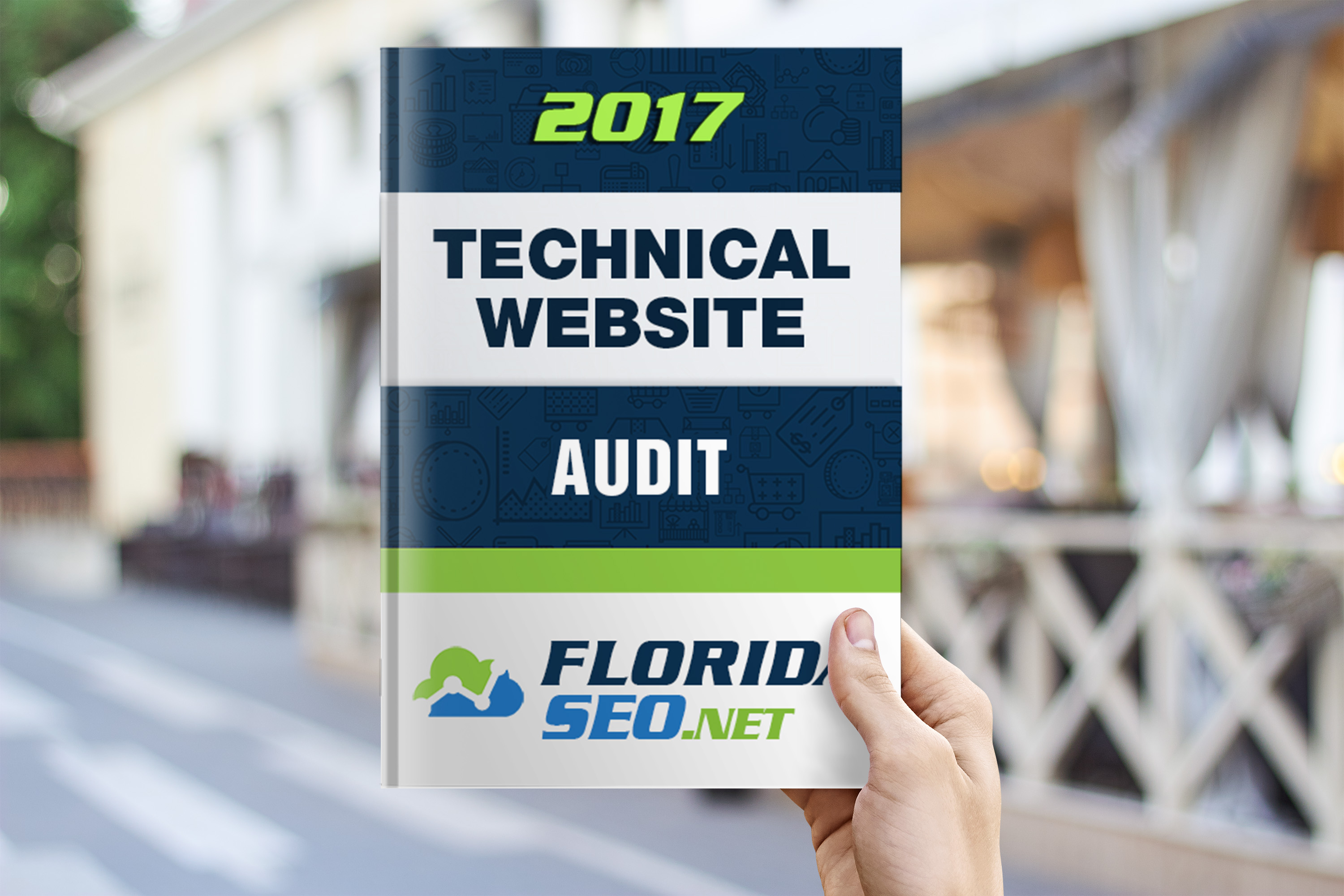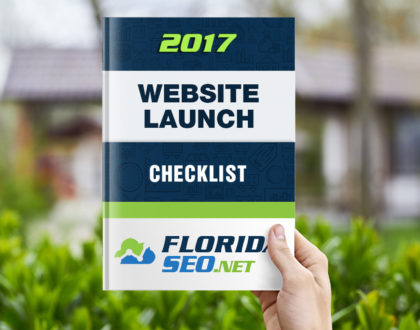Is your website broken? Follow this SEO Audit and see!

Technical Site Audit
- Check indexed pages
- Site: Search in Google
- Homepage is the first result (or near the top)
- Review number of organic landing pages in Google analytics
- This is often the best measure of how many pages are indexed AND Google finds valuable
- Search for brand and branded terms
- Is the homepage showing up at the top, or are correct pages showing up?
- Check Google’s cache for key pages
- Content shows up
- Navigation links are present
- Check for hidden content / links
- Do a mobile search for your brand and key landing pages
- Your listing has the “mobile friendly” label
- Landing pages are mobile friendly
On-page SEO
- Title tags are:
- Optimized
- Unique
- 5560 characters (512 pixels)
- Important pages have clickthrough rate optimized titles and meta descriptions
- Pages are not missing page titles and meta descriptions
- The onpage content includes the primary keyword phrase multiple times as well as variations and alternate keyword phrases
- There is a significant amount of optimized, unique content on key pages
- The primary keyword phrase is contained in the H1 tag
- Images’ file names and alt text are optimized to include the primary keyword phrase associated with the
- URLs are descriptive and optimized
- URLs are clean:
- No excessive parameters
- URLs are static
- URLs are short (115 characters or shorter)
Content Creation
- Homepage is optimized
- At least one paragraph of text
- Enough content to give search engines an understand of what the page is about (typically at least 150 words)
- Content is unique
- Landing pages are optimized
- At least a couple paragraphs of content enough to help search engines understand what the page is about
- Is the text templated or completely unique
- Site contains real and substantial content
- Is there real content on the site or is the “content” simply a list of links
- Proper keyword targeting
- The intent behind the keywords match the intent of the landing page
- Pages exist to target head terms, midtail terms, and longtail keywords
- Keyword Cannibalization
- site:search in Google for important keyword phrases does not reveal a significant amount of pages competing for the same term
- There is are no duplicate page titles or duplicate content
- Content exists to help users convert and is easily accessible to users
- Content to help educate users about the product or service
- Content formatting
- Content is formatted well and is easy to read quickly
- H tags are used
- Images are used
- Text is broken down into easy to read paragraphs
- Good headlines on blog posts
- Headlines are well written and draw users
- Amount of content versus ads
- There is significant unique content above the fold
- There are not an excessive amount of ads above the fold
Duplicate Content
- There should be one URL for each piece of content
- URL parameters are not used, or are otherwise dealt with
- The same content doesn’t exist on different URLs (often product/category related)
- Do an in quotes search to check for duplicate content
- Content does not show up elsewhere on the domain
- Content has not been scraped
- If scraped file a content removal request with Google
- The same content does not exist on different subdomains
- The same content does not exist on a secure version of the site
- The same content is not replicated on other domains owned by the company
- Printer friendly pages are not causing duplicate content
Accessibility & Indexation
- Entire site, or key pages, have not been blocked in the txt file
- Content displays correctly when JavaScript, cookies, and CSS are turned off
- Navigation & Internal links display correctly when JavaScript, cookies, and CSS are turned off
- Content is the same when you set the user agent to Googlebot
- There are not excessive 4xx or 5xx errors in a crawl report (Moz, Screaming Frog, etc)
- XML sitemaps are listed in the robots.txt file
- XML sitemaps are submitted to Google/Bing Webmaster Tools
- Important pages do not contain the meta robots noindex tag (Moz, Screaming Frog, etc)
- Duplicate / thin content has the noindex command or is disallowed in txt
- Goal pages are prevented from receiving organic visits
Website Architecture
- Number of links on a page is reasonable (100200 typically)
- Vertical linking structures are in place
- Homepage links to category
- Category pages link to subcategory and product pages as appropriate
- Product pages link to relevant category
- Horizontal linking structures are in place
- Category pages link to other relevant category
- Product pages link to other relevant product
- Links are in content
- Does not utilize massive blocks of links stuck in the content to create internal links
- Footer does not use a block of links instead of proper
- Footer does not link to landing pages with optimized
- Internal anchor text is used appropriately
- No/minimal broken links
Technical issues
- 301 redirects are being used for all redirects
- 302, 307, meta refresh, and JavaScript redirects are not used as they pass little to no
- Redirect chains are not used
- Content is not served using JavaScript
- Links are not served in JavaScript (unless intentionally done so)
- Content is not pulled in via iFrames
- Flash is not used to deliver content
- No errors in Google Webmaster Tools
- XML sitemaps in place
- XML sitemaps are not band aids for poor site architecture
- XML sitemaps are structured to show indexation problems
- XML sitemaps follow proper XML protocols
- Canonical version of the site established through 301s
- Canonical version of site is specified in Google Webmaster Tools
- Rel canonical link tag is properly implemented across the site
- Uses absolute URLs instead of relative URLs
WebsiteSpeed
- Pages load in a reasonable amount of time
- Make sure compression is enabled
- Caching is enabled
- Images are optimized for the web
- CSS/JS/HTML is minified
- There are not excessive number of HTTP requests
- Site is hosted on a fast server
Mobile Responsiveness
- Site renders properly for mobile and tablet visitors
- A mobile experience is set up (responsive design, dynamic serving, dedicated mobile site)
- Analytics is set up properly if separate mobile content exists
- Mobile configuration is specified
- Responsive The viewport meta tag is used
- Dynamic serving The Vary HTTP header is used
- Mobile site Mobile content uses the canonical tag to point to the desktop version
- Mobile site Desktop content uses the rel alternate tag to point to the mobile version
- Buttons are not too close together for mobile visitors
- The mobile experience matches up with the intent of mobile visitors
- Ensure faulty mobile redirects do not exist
Google Analytics & Tracking
- Analytics tracking code is on every page
- There is only one instance of a GA property on a page
- Analytics is properly tracking and capturing internal searches
- Demographics tracking is set up
- Adwords and Adsense are properly linked if you are using these platforms
- Internal IP addresses are excluded
- UTM Campaign Parameters are used for other marketing efforts
- Meta refresh and JavaScript redirects are avoided
- Event tracking is set up for key user interactions
Recommended Posts

The Ultimate Digital Marketing Definitions Cheat Sheet
August 4, 2021

USA Politics makes it’s way to the SEO industry
November 21, 2017

Step-by-step on how to launch a pro website!
May 23, 2017
